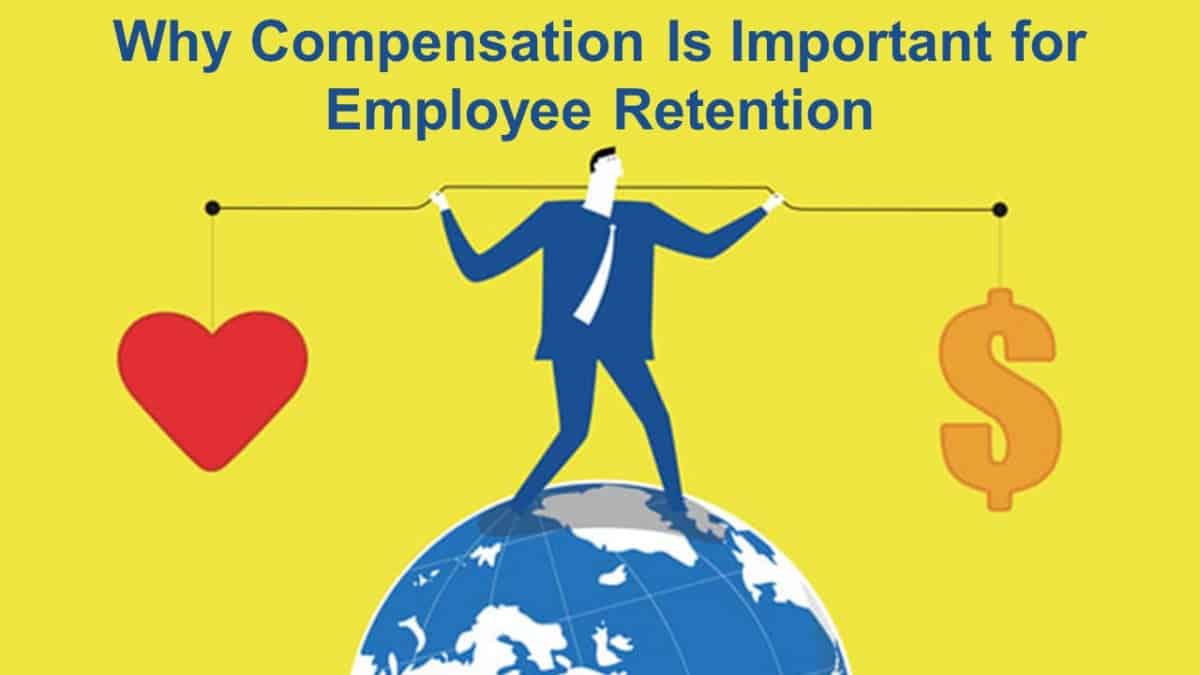

Finance
What Does Waive Mean In Insurance
Published: November 23, 2023
Looking for a clear definition of "waive" in insurance? Find out what this finance term means and how it relates to your insurance coverage.
(Many of the links in this article redirect to a specific reviewed product. Your purchase of these products through affiliate links helps to generate commission for LiveWell, at no extra cost. Learn more)
Table of Contents
Introduction
Insurance is an essential tool that provides individuals and businesses with financial protection against unforeseen circumstances. It offers peace of mind knowing that you are covered in case of accidents, illnesses, or property damages. However, there are instances where insurance policies can be adjusted or modified to better suit the needs of policyholders. One such adjustment is the concept of waiving.
When we hear the word “waive,” we may think of it in the context of giving up a right or privilege. In the realm of insurance, waiving refers to the act of voluntarily relinquishing certain terms or conditions outlined in an insurance policy. It allows policyholders to customize their coverage to better align with their specific needs and circumstances.
In this article, we will delve deeper into the concept of waiving in insurance and explore various aspects where it can be applied. We will discuss the meaning of waiving and how it can be utilized in different situations, such as waiving insurance premiums, policy exclusions, deductibles, waiting periods, subrogation rights, insured’s responsibilities, and proof of loss.
By understanding the concept of waiving, insurance policyholders can make informed decisions about their coverage and potentially tailor it to their unique requirements.
Definition of Waive
Before diving into the various applications of waiving in insurance, let’s first clarify what exactly is meant by “waive.” In the insurance context, waiving refers to the voluntary surrender or abandonment of certain provisions or requirements stated in an insurance policy.
When a policyholder waives a specific provision, it means they are choosing not to enforce or claim the benefits, rights, or responsibilities associated with that provision. Essentially, they are giving up a particular aspect of the policy’s terms and conditions, often to modify or customize their coverage.
Waiving in insurance typically involves the policyholder requesting changes to the original terms of the policy, whether it’s temporarily or permanently. It is important to note that the ability to waive certain provisions may vary depending on the insurance company and the specific policy language.
Insurance policies are typically written in a standardized format, including clauses that outline the rights and obligations of both the insurer and the policyholder. These clauses may include provisions related to premiums, exclusions, deductibles, waiting periods, subrogation rights, insured’s responsibilities, and proof of loss. By waiving or modifying these provisions, policyholders have the opportunity to mold their coverage to better suit their needs.
It’s essential to consult with your insurance provider and thoroughly review the policy terms before considering any amendments or waivers. This will ensure that you fully understand the implications and consequences of waiving specific provisions in your insurance policy.
Now that we have a clear understanding of what waiving means in the context of insurance, let’s explore some common applications of waiving in the insurance industry.
Waiving Insurance Premiums
One of the most common applications of waiving in insurance is related to insurance premiums. Premiums are the regular payments made by policyholders to maintain their insurance coverage. However, there may be instances where a policyholder faces financial hardship or difficulty in meeting the premium payments.
In such cases, insurance companies may offer the option to waive or suspend the payment of premiums for a certain period, typically referred to as a premium waiver. This allows policyholders to maintain their coverage without the burden of immediate payment.
Waiving insurance premiums can be particularly beneficial in situations of financial distress, such as temporary unemployment, illness, or other unforeseen circumstances that impact a policyholder’s ability to meet their financial obligations. It provides a temporary relief from premium payments, ensuring that the policy remains active and coverage is not lost.
It’s important to note that waiving insurance premiums is typically a temporary solution and policies may have certain conditions and limitations imposed by the insurance company. Policyholders are generally required to demonstrate their financial hardship and may need to provide supporting documentation to qualify for the waiver.
Additionally, it’s crucial to understand that waiving premiums does not mean the premiums are forgiven or erased. Rather, they are postponed or deferred until a later date. Eventually, policyholders may need to catch up on the missed premium payments or arrange for alternative payment options.
Before considering waiving insurance premiums, it is advisable to consult with your insurance provider and discuss the available options. They can guide you through the process, explain the terms and conditions, and help determine if waiving premiums is the most suitable choice for your situation.
Waiving insurance premiums can be a valuable tool in times of financial hardship, providing temporary relief while still preserving the coverage and benefits offered by the insurance policy.
Waiving Policy Exclusions
Insurance policies typically include a list of exclusions that specify what the policy does not cover. These exclusions are put in place to limit the insurer’s liability and to ensure that the policy remains financially sustainable. While exclusions are meant to protect the insurer, they can sometimes leave policyholders without coverage in certain situations.
However, in some cases, policyholders may have the option to waive or modify specific policy exclusions to broaden their coverage. By waiving an exclusion, policyholders can ensure that they are protected in situations that are typically excluded from their policy.
For example, let’s say you have a homeowner’s insurance policy that excludes coverage for a specific type of natural disaster, such as earthquakes. If you live in an area prone to earthquakes, you may have the opportunity to waive the exclusion and add coverage for earthquake damage onto your policy.
Waiving policy exclusions can provide policyholders with the peace of mind that they are protected against specific risks that were previously excluded. It allows individuals to tailor their coverage to better suit their needs and mitigate risks specific to their circumstances.
It’s important to note that waiving policy exclusions may come with additional costs or require meeting specific criteria. Insurance companies may conduct assessments or require policyholders to meet certain conditions to ensure the appropriate coverage is in place.
Prior to waiving any policy exclusions, it’s essential to thoroughly review your insurance policy and consult with your insurance provider to understand the implications and any associated costs. They can provide guidance on whether waiving policy exclusions is feasible and advisable for your specific insurance needs.
By waiving policy exclusions, policyholders can expand their coverage and ensure they are adequately protected in situations that would typically be excluded under their policy. It’s a valuable option that provides added flexibility and customization to insurance coverage.
Waiving Deductibles
Deductibles are the predetermined out-of-pocket expenses that policyholders must pay before their insurance coverage kicks in. It is a way for insurance companies to share the financial responsibility with the policyholder. However, there may be situations where policyholders face significant financial strain due to a high deductible.
To address this concern, some insurance companies offer the option to waive deductibles in certain circumstances. Waiving a deductible means that the policyholder does not have to pay the predetermined amount before the insurance coverage takes effect.
This can be particularly beneficial in cases where the policyholder is experiencing financial hardship or a large loss that requires significant repairs or replacements. By waiving the deductible, policyholders can alleviate some of the financial burden associated with their claims.
It’s important to note that waiving deductibles is often subject to conditions and limitations set by the insurance company. For example, certain insurance policies may only offer deductible waivers for specific types of claims, such as natural disasters or accidents.
Additionally, waiving deductibles is not always an automatic process. Policyholders may need to meet certain criteria or provide supporting documentation to qualify for the waiver. It is crucial to contact your insurance provider for guidance and to understand the specific requirements for waiving deductibles under your policy.
Before considering the option to waive deductibles, policyholders should carefully weigh the potential benefits against the long-term financial implications. Waiving a deductible may result in higher premiums or other adjustments to the insurance policy terms.
Overall, waiving deductibles can provide much-needed financial relief for policyholders in certain situations. It allows individuals to prioritize repairs and recovery without upfront out-of-pocket expenses, ensuring that their insurance coverage is accessible when they need it most.
Waiving Waiting Periods
Waiting periods are common in insurance policies and refer to a specified period of time that must pass before certain benefits or coverage can be utilized. Waiting periods are put in place to prevent fraudulent claims and ensure the financial stability of the insurance company.
However, there may be situations where policyholders require immediate access to coverage without having to wait for the designated waiting period. In such cases, insurance companies may offer the option to waive waiting periods, allowing policyholders to access benefits or coverage sooner.
Waiving waiting periods can be particularly crucial in situations where urgent or unforeseen needs arise. For instance, in health insurance, waiving waiting periods can be beneficial for individuals who require immediate medical attention or have pre-existing conditions that require immediate coverage.
Insurance companies may have specific guidelines or criteria for waiving waiting periods, such as medical emergencies or life-changing events. Policyholders are typically required to provide documentation or evidence supporting their case to qualify for the waiver.
It is essential for policyholders to consult with their insurance providers to understand the terms and conditions surrounding waiving waiting periods. Providers can guide policyholders through the process and provide necessary information on the eligibility criteria.
However, it’s important to note that waiving waiting periods may come with certain trade-offs or adjustments to the policy terms. For example, policyholders may experience higher premiums or other policy modifications as a result of waiving waiting periods.
Before making a decision to waive waiting periods, individuals should carefully evaluate their immediate needs against the long-term implications. Understanding the potential costs and benefits is crucial to making an informed decision.
In certain circumstances, waiving waiting periods can provide policyholders with immediate access to the benefits and coverage they need. It can be a valuable option for those facing urgent situations and ensures that their insurance policy aligns with their specific needs and circumstances.
Waiving Subrogation Rights
Subrogation is a process where an insurance company takes legal action against a third party to recover the funds it has paid out as a result of a claim. This is typically done when the third party is deemed responsible for the damages or losses suffered by the policyholder.
However, there are instances where policyholders may choose to waive their subrogation rights. Waiving subrogation rights essentially means that the policyholder gives up their ability to pursue legal action against a third party. This allows the policyholder to quickly receive the insurance benefits without further delays.
There are several reasons why a policyholder may decide to waive subrogation rights. For example, in the case of a property damage claim, the policyholder may want to quickly repair or replace the damaged property without waiting for the lengthy legal process associated with subrogation.
Waiving subrogation rights can also be advantageous in cases where the responsible third party does not have the financial capacity to fully compensate the policyholder. By waiving subrogation rights, the policyholder may be able to collect their insurance benefits more expeditiously.
It’s important to note that waiving subrogation rights may have implications on the overall claims process and potential recoveries. Once the rights are waived, the insurance company assumes their position and may not have the ability to pursue legal action against the third party on behalf of the policyholder.
Prior to waiving subrogation rights, policyholders should carefully consider the potential consequences and consult with their insurance provider. Providers can offer guidance on the implications and assist in evaluating the best course of action.
Ultimately, waiving subrogation rights can provide policyholders with faster access to their insurance benefits and expedite the claims process. It allows individuals to move forward with their recovery efforts without delays caused by legal action against responsible parties.
Waiving Insured’s Responsibilities
Insurance policies often come with certain responsibilities that policyholders must fulfill to maintain coverage and receive benefits. These responsibilities can include actions such as timely reporting of claims, providing accurate information, cooperating with the insurer’s investigation, and mitigating further losses.
However, there may be situations where policyholders face challenges and may need to request the waiver of certain responsibilities. Waiving insured’s responsibilities allows policyholders to be relieved of certain obligations, providing them with some flexibility in unique circumstances.
For example, if a policyholder experiences a difficult life event, such as a sudden loss of a loved one or a natural disaster, it may be challenging for them to fulfill their responsibilities within the required timeframes. In such cases, they may request their insurance company to waive certain requirements temporarily.
Waiving insured’s responsibilities can also be beneficial in cases where policyholders face language barriers, lack of understanding of insurance procedures, or other extenuating circumstances that prevent them from complying with the original terms of the policy.
Policyholders should reach out to their insurance provider and clearly explain their situation when requesting the waiver of their responsibilities. It is important to maintain open communication with the insurer, providing any necessary documentation or evidence to support the request.
While waiving insured’s responsibilities may offer temporary relief, it’s essential to understand that the overall obligations and responsibilities under the insurance policy remain intact. It is advisable to discuss the implications of waiving insured’s responsibilities with the insurance provider to ensure a clear understanding of any potential consequences.
By waiving insured’s responsibilities, policyholders can navigate through challenging situations without the added stress of fulfilling certain obligations. This can help to ease the burden and allow policyholders to focus on necessary recovery or rebuilding efforts.
Waiving Proof of Loss
Proof of loss is a requirement in insurance claims where policyholders are obligated to provide documentation and evidence to support their claim for reimbursement or compensation. This documentation serves as proof of the extent of the loss or damages suffered.
Sometimes, policyholders may find it challenging to provide all the necessary documentation within the specified timeframe due to various reasons such as loss of important documents, displacement, or other circumstances arising from a covered event. In such cases, policyholders may request a waiver of the proof of loss requirement.
Waiving proof of loss means that the insurance company accepts the claim without the typical documentation normally required. Instead of submitting detailed evidence, a policyholder may provide a sworn statement or affidavit attesting to the loss and its estimated value.
Usually, insurance companies reserve the right to request further documentation or evidence at a later stage to properly assess the claim. The waiver of proof of loss is typically granted on a case-by-case basis and depends on the circumstances surrounding the claim.
It’s crucial for policyholders to consult with their insurance provider when requesting a waiver of proof of loss. The insurance company will guide them through the process and let them know the specific requirements and expectations for the claim resolution.
It’s important to note that waiving proof of loss does not guarantee automatic claim approval. The insurance company will still evaluate the claim based on the available information and evidence provided.
Policyholders should keep in mind that waiving proof of loss might have implications on the outcome of the claim. Without comprehensive documentation, it may be more challenging to prove the extent of the damages or losses incurred.
By waiving proof of loss, policyholders are provided with flexibility and an opportunity to expedite the claims process, especially in situations where gathering the necessary documentation is difficult or time-consuming.
Conclusion
Waiving provisions in an insurance policy allows policyholders to customize their coverage and address specific needs and circumstances. Whether it’s waiving insurance premiums during times of financial hardship, waiving policy exclusions to broaden coverage, waiving deductibles to alleviate financial strain, waiving waiting periods to gain immediate access to benefits, waiving subrogation rights for quicker claim settlements, or waiving insured’s responsibilities in challenging situations, these options provide flexibility and adaptability in the insurance industry.
While the ability to waive certain provisions may vary depending on the insurance company and the specific policy language, it’s crucial for policyholders to consult with their insurance provider to understand their options and the implications of waiving certain provisions.
Waiving provisions can provide temporary relief, expedite claim settlements, and offer greater customization of coverage. However, it’s important to carefully consider the trade-offs and potential long-term effects of waiving provisions. Waiving provisions may result in adjustments to policy terms, increased premiums, or limitations in coverage.
Insurance policies should be reviewed regularly to ensure they align with the evolving needs of policyholders. By understanding the concept of waiving provisions and consulting with insurance providers, policyholders can make well-informed decisions and tailor their coverage to best suit their unique requirements.
In conclusion, waiving provisions in insurance allows policyholders to have greater control over their coverage, enabling them to navigate challenging situations and customize their policies to fit their individual needs.














